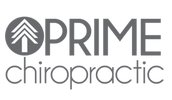Sciatica pain treatment is full of challenges.
Hence the reason for this post. My goal is to make this the most complete and succinct summary of sciatica pain treatment you’ve seen. Let me know what you think…😁
Sciatica is simply a term or diagnosis to describe a variety of different symptoms involving the sciatic nerve.
The sciatic nerve exits from the spine at the lower spinal levels of L4-S3. The multiple exit points help to form branches that eventually merge to form the largest nerve in the body.
Because of its size, length, and multiple branches, sciatica pain is often full of complications and very frustrating.
Sciatica symptoms can be experienced as pain in the low-back, in the hips and piriformis, and even down the leg, into the feet.
As I mentioned, sciatica can be due to multiple factors, but there a few things you can do at home to help get some quick sciatica relief:
To begin, if your sciatica originates in the low-back, the problem may be due to a shift in the spine that promotes a disc herniation, an enlarged facet capsule (specific part of the vertebrae), or thickening of the ligaments that surround the vertebrae. These could all pinch the nerve as it exits the spine.
If sciatica starts in the low back, it is likely that different positions will aggravate or make you feel better. Specifically, if you spend more time in a flexed position (think rounded forward), you’ll need to spend more time in the opposite position. Try using a lumbar support to help. If you spend more time in the opposite position of hyper-extension, you’ll want to focus on staying in a braced posture (Unsure of what “braced” means? Attend the next Prime Movement Seminar).
The piriformis muscle runs from the outside of your sacrum to the inside of your femur.
The sciatic nerve sometimes runs around, and even through this muscle, depending on the person. If the piriformis muscle is tight or in spasm, it can clamp down on the sciatic nerve and cause symptoms.
This is Piriformis Syndrome.
Now, there are 2-types of piriformis problems, short and long.
Here’s how to know the difference…
If you have can achieve lots of internal rotation with the leg that isn’t affected by sciatica, and very little rotation on the symptomatic side, you have a short piriformis muscle which is most likely the main culprit. Performing the piriformis stretch I demonstrate at Prime Movement, or that can be found in the Vault, along with rolling out the muscle will help. A long piriformis muscle is the second type of problem. This will be a much less likely scenario. This will present with even more internal rotation on the symptomatic side compared to the healthy leg. For this, perform a side-plank clamshell exercise.
Nerve flossing will always be helpful in sciatica. It’s an exercise that helps to slide the sciatic nerve up and down. ***Don’t stretch your hamstrings if dealing with sciatica, it will only inflame the nerve more. If you want to see nerve flossing, there’s a video covering it inside the Quick Relief – Lower Body Module of the Vault. Perform 10-20 reps per day. If it’s helpful, double the amount the following day.
Once you’ve begun to get some short-term relief from sciatica…
I encourage you to begin addressing the underlying factors. These common denominators are usually the structure of your spine and/or the muscle and soft tissue nearby.

